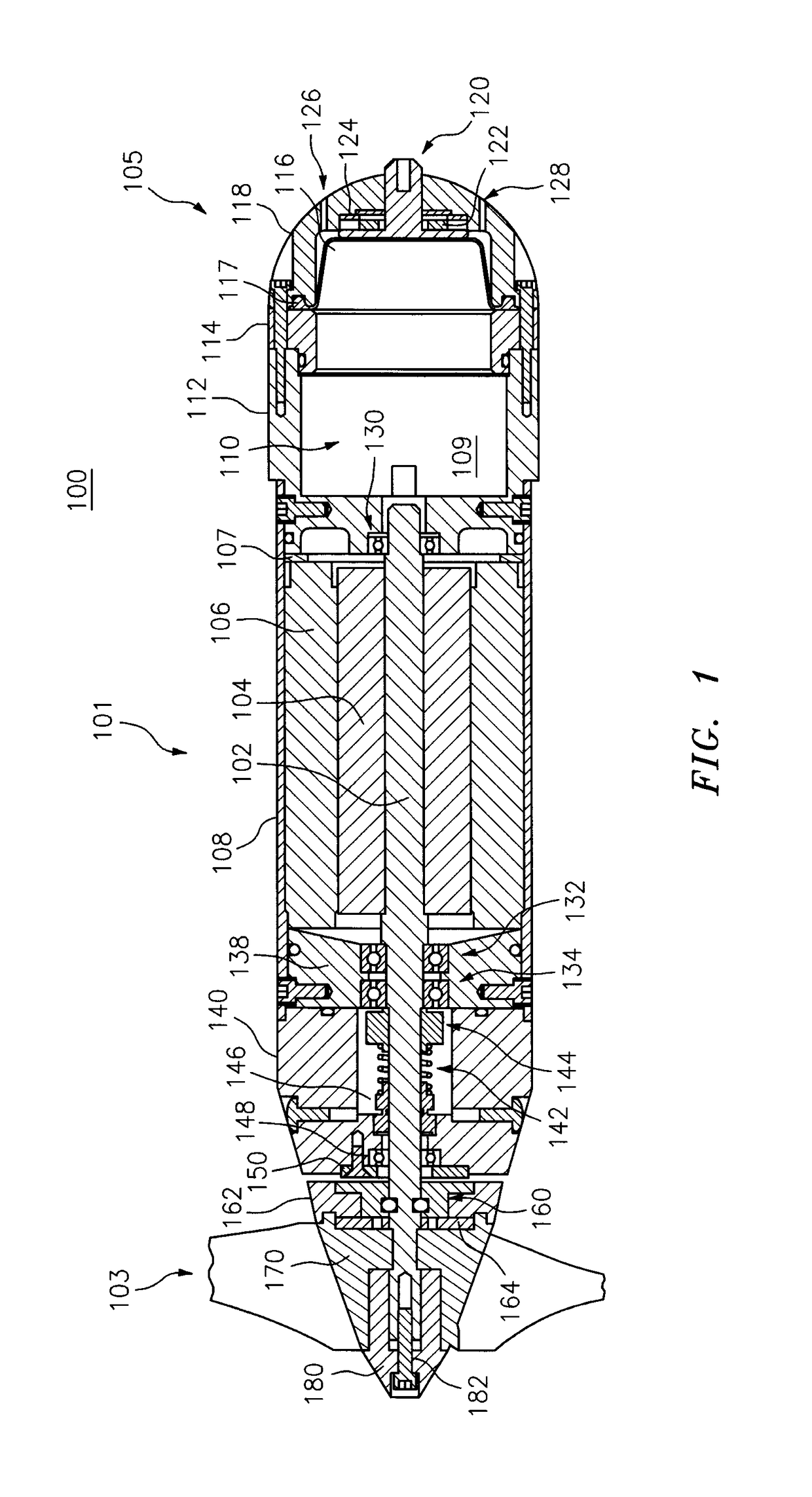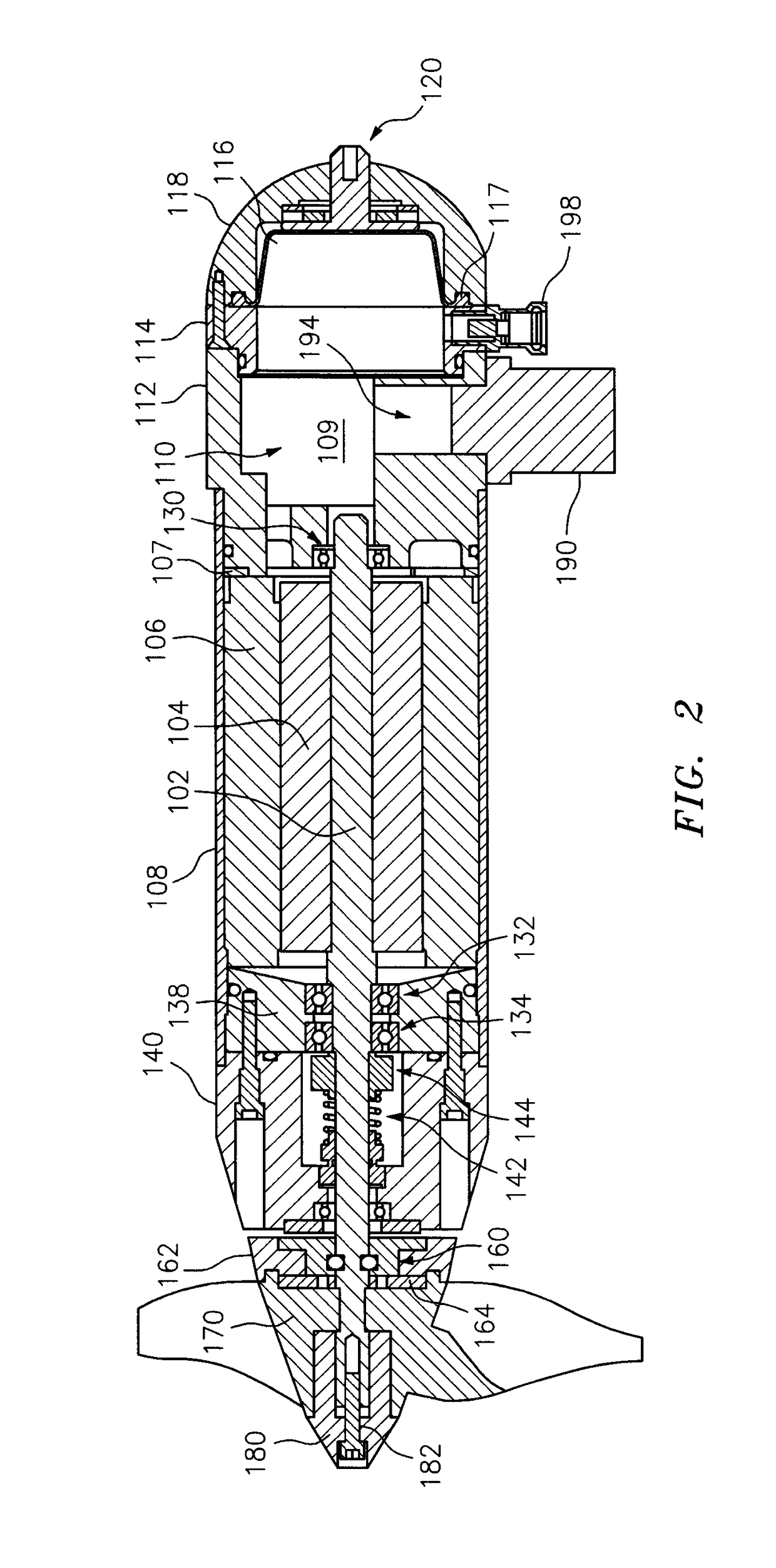Efficiency submersible thruster
a thruster, high-efficiency technology, applied in underwater equipment, special-purpose vessels, vessel construction, etc., can solve the problems of affecting the influence of windage and friction losses, and the size or weight of the allowable battery, so as to increase the efficiency of the thruster submerged
- Summary
- Abstract
- Description
- Claims
- Application Information
AI Technical Summary
Benefits of technology
Problems solved by technology
Method used
Image
Examples
example i
[0074]This Example describes a direct drive thruster for medium endurance, battery powered vehicles such as Autonomous Underwater Vehicles (AUVs), Remotely Operated Vehicles (ROVs) and Hybrid Remotely Operated Vehicles (HROVs). The thruster utilizes a custom wound, brushless DC, frameless motor kit from a commercial motor supplier such as Allied Motion, Inc., as described above. The motor is designed to have a narrow form factor but long length. The computer controlled windings from the kit facilitate a relatively low speed operating point. The motor drives a propeller with high efficiency due to low friction losses, as shown in FIG. 7.
[0075]The Sentry AUV has a depth capability of 5,900 m (19,356 feet), a length of 2.9 m (144″), a height of 1.8 m (71″), a width of 0.8 m (31″) without fins extended, and a width of 2.2 m (88″) with fins extended. A typical weight for Sentry is 1,250 kg (2,750 lbs.). The hydrodynamic shape of Sentry enables fast ascents and descents, especially when p...
PUM
 Login to View More
Login to View More Abstract
Description
Claims
Application Information
 Login to View More
Login to View More - R&D
- Intellectual Property
- Life Sciences
- Materials
- Tech Scout
- Unparalleled Data Quality
- Higher Quality Content
- 60% Fewer Hallucinations
Browse by: Latest US Patents, China's latest patents, Technical Efficacy Thesaurus, Application Domain, Technology Topic, Popular Technical Reports.
© 2025 PatSnap. All rights reserved.Legal|Privacy policy|Modern Slavery Act Transparency Statement|Sitemap|About US| Contact US: help@patsnap.com



